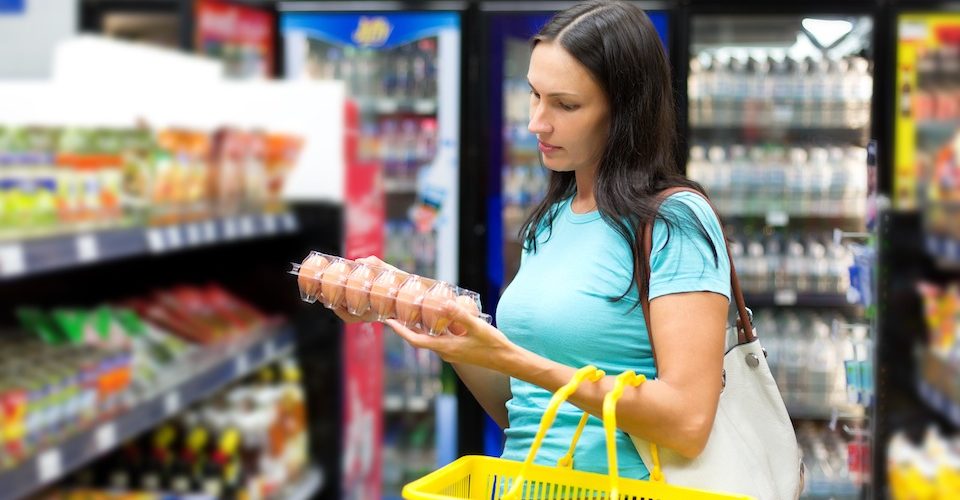Being an informed grocery shopper can be hard work. Everywhere you look, companies are trying to sell you on how “natural” and “eco-friendly” their products are. Often, it can be downright tricky to distinguish between meaningful labels and greenwashing. Read on for a crash course in common Canadian eco-food labels and what they really mean.
Being an informed grocery shopper can be hard work. Everywhere you look, companies are trying to sell you on how “natural” and “eco-friendly” their products are. Often, it can be downright tricky to distinguish between meaningful labels and greenwashing. Read on for a crash course in common Canadian eco-food labels and what they really mean.
Organic
Since 2009, only products with organic content that is greater than or equal to 95 per cent may be labelled as “Organic” or bear the “organic” logo. Multi-ingredient products with 70 to 95 per cent organic content may have the declaration “contains x% organic ingredients,” but they may not use the label “Organic” or the logo. Any product that makes an organic claim must be certified by an agency accredited by the Canadian Food Inspection Agency (CFIA).
Food for thought: is there a lack of field testing of Canadian organic-certified products? Download this report by the Frontier Centre for Public Policy, which suggests there could be a rather large hiccup in the system.
Local
Under new rules from the CFIA, the terms “local” and “locally grown” can now refer to food produced anywhere within your province or territory, and food sold across provincial borders within 50 km of the originating province or territory. That’s quite a stretch from the previous policy, in which the terms meant that food originated within a 50 km radius of the place where it was sold. Food from the same or adjacent counties or municipalities also qualified. The new rules mean that corn grown in the GTA and sold in Thunder Bay (almost 1,000 kilometres away) could be classified as “local,” for example. Consumers who want food grown closer to home will need to ask more questions.
Grass-fed
Labels stating that meat products come from “grass-fed” animals aren’t subject to formal government approval in Canada; unfortunately, the term can be used quite loosely. The good news? The CFIA recently approved the first Canadian certification label for grass-fed meat. The label was developed by the U.S. certifying body Animal Welfare Approved (AWA). Livestock must be born and raised entirely on grass and forage, and also raised on pasture or range for their whole lives. Find AWA-certified products near you.
Cage-free, free-run and free-range
Forget sunny-side up or over-easy: the “How do you like your eggs?” dilemma has become much more complex. “Cage-free” means exactly that. Hens are not confined to crowded battery cages – but they don’t necessarily have access to the outdoors. “Free-run” means that chickens can move around in open-concept barns (better), and “free-range” means that hens actually go outside (best). Although these terms exist, the sad reality is that there is no certification to oversee their use. In general, organic certification programs are best, because they take into account the chickens’ diet and living conditions. Download a handy chart that outlines labels to look for.
Fairtrade
Products certified by Fairtrade meet rigorous environmental, labour and developmental standards, as assessed by independent auditors. By requiring companies to pay sustainable prices to their producers (among other criteria), the program addresses unfair practices in conventional trade that put small-scale farmers at a disadvantage. The Fairtrade program covers a growing range of food products, from coffee to cocoa to bananas.
GMO-free
Canada doesn’t require labelling for foods that contain genetically modified organisms (GMOs), so many consumers want to know which foods don’t have them. According to the Non-GMO Project, “Unfortunately, ‘GMO free’ and similar claims are not legally or scientifically defensible due to limitations of testing methodology. In addition, the risk of contamination to seeds, crops, ingredients and products is too high to reliably claim that a product is ‘GMO-free.’” When you shop, look for the “Non-GMO Project Verified” seal, North America’s only independent verification for products made according to best practices for avoiding GMOs. Good news: GMO labelling is coming to Whole Foods Market.
Natural
This is one of the most confusing terms you’ll find on product labels. Sure, “natural” brings to mind thoughts of fresh, minimally processed food, but in reality the terms have no regulatory meaning. They aren’t synonymous with “organic” or “healthy.” They may not even apply to the whole product – the manufacturer might be referring to a single ingredient. The CFIA describes “natural” foods loosely: “A natural food or ingredient of a food is not expected to contain, or to ever have contained, an added vitamin, mineral nutrient, artificial flavouring agent or food additive” or “A natural food or ingredient of a food does not have any constituent or fraction thereof removed or significantly changed, except the removal of water.” When it comes to “natural,” it’s buyer beware.
Raised without the use of hormones
In Canada, growth hormones are only given to beef cattle. There are no growth hormones used in poultry, pork or dairy production due to CFIA regulations. This means that any “hormone-free” or “raised without the use of hormones” labels on dairy products, pork and chicken are purely for marketing purposes. The same applies to “rBGH-free” milk; this hormone is banned in Canada for dairy cattle.
We’ve just scraped the surface of the vast number of terms and claims used to promote and label the foods we buy. While a few of these terms and claims have definitions controlled by the government, most are unregulated and many are self-made. When evaluating a claim’s validity, check if it has been independently verified by a third party. If not, you may want to dig a little deeper to ensure you know what you’re getting.
Green Living Online is a property of Green Living Enterprises, a full-service, one-stop solution for environmental and cause marketing. Our services include product and program development, custom publishing and event marketing. Green Living Enterprises also includes the Green Living Show, North America’s largest consumer show dedicated to living a healthy and sustainable lifestyle.













